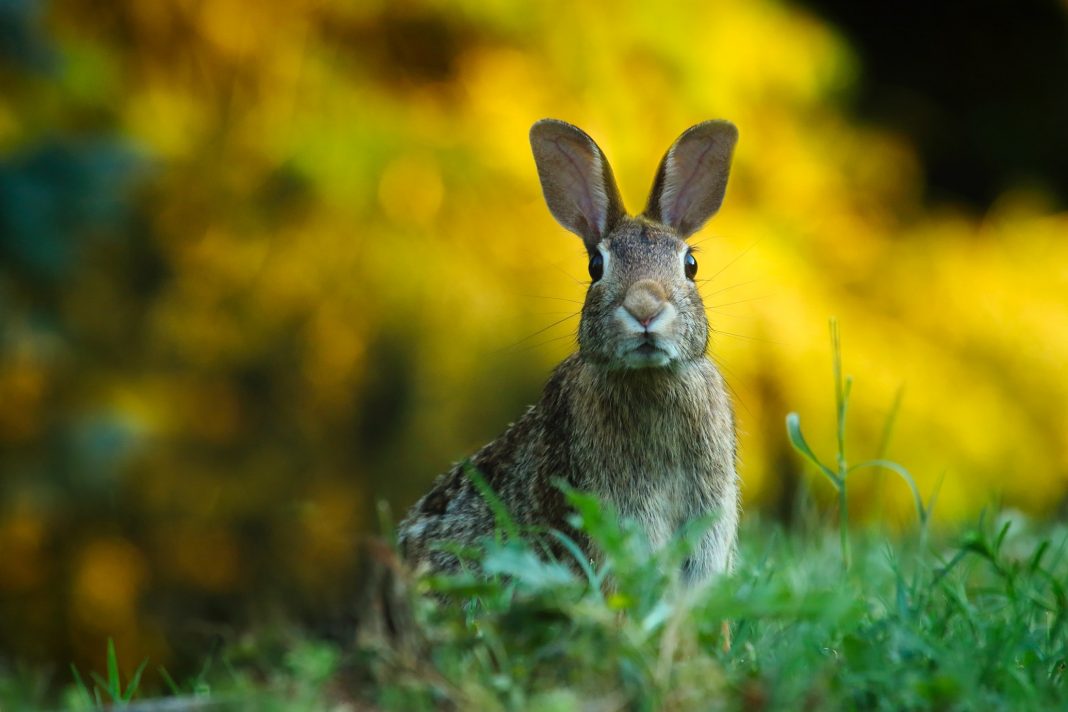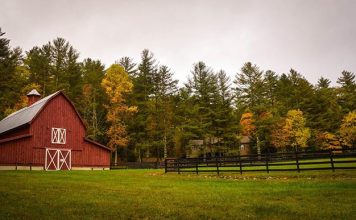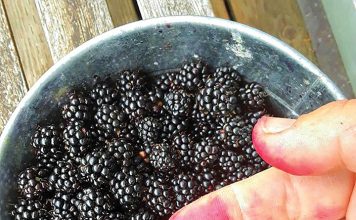| Issue #106 • July/August, 2007 |
Whether or not you are fond of rabbit stew, raising rabbits for meat can be a great experience and can even help swell your pocketbook a little. The same characteristics that make rabbits good backyard pets also make them good to raise for meat: They take up little space, are easy to care for, and are relatively inexpensive to house and feed.
I’ve been raising rabbits since I was a kid, starting out with pets, then graduating to 4-H show rabbits, then finally to meat rabbits, which I sold to a butcher and auctioned off at local fairs. At its peak, the rabbitry my mom, sister, and I shared housed over seventy rabbits and was making us a couple thousand dollars a year, but it all started out with old Floppy Ears in a crumbling hutch. We learned a lot from trial and error, and even more from talking with other rabbit raisers. Here are some tips to start you off on the right foot.
A profitable meat rabbit business can be started with just three or four does (females), a buck (male) or two, some basic equipment, and a buyer. First, decide on what type of rabbit to raise. It will be easier to find a buyer for the offspring if they are pure bred, but whether or not they have pedigrees is up to you. Pedigrees are more important if you plan on selling the offspring to other breeders or you will want to show them at some point. The most common breeds are Californians and white New Zealands. If you decide to go with a different breed, stick with white fur. Whoever butchers the rabbit will appreciate it, as white hairs are not as discernible on a carcass as dark hairs. (Some butchers refuse to use dark-haired rabbits at all because of this.)

Buy quality stock from a respected breeder in your area. You can find one by calling your local 4-H office, or by attending a rabbit show and talking to breeders. It’s best to talk to several people before buying. That will give you a feel for who is reliable because, just like in any business, some breeders will overcharge for their stock and give you bad information. By and large, however, experienced breeders love to help someone get started.
When purchasing the rabbits, look for signs of good health. Make sure the animals are lively; with clear, bright eyes; soft, clean fur; and no moisture around the nose and mouth. Rabbits become sexually mature at about five months, and you probably don’t want to purchase anything older than three years. (Average life expectancy is eight years.)
If you don’t mind butchering your own rabbits, you can look for a buyer in the restaurant industry. Offer reliable delivery of a certain number of dressed rabbits per week. If you prefer to leave the butchering to someone else (which is probably wisest if you are inexperienced), look for a middleman. These people make a living from buying live rabbits, butchering and dressing rabbits, then selling them to restaurants, sometimes across the state. My family dealt with a middleman for many years, and found it to be much easier and still profitable. The benefits are that you don’t have to spend the time butchering and you can take as many rabbits as you have ready at one time instead of having to meet a certain quota. The drawback is that the middleman will pay less than a direct sale to a restaurant will.
Aside from a draft-free barn or garage, initial expenses will include the rabbits, caging, feed and water dispensers, feed, and nest boxes. For a new 30″ by 36″ wire rabbit cage you can plan on spending about $30. You have several options for feed and water containers: water bottles and metal feed dispensers for about $5 each (allowing you to feed and water without having to open the cage door), rabbit crocks for somewhat less, or an automatic watering system for quite a bit more (kits can be purchased from rabbit supply stores). Conversely, you can use heavy old soup bowls that the rabbits cannot tip over. We used an eclectic mix of bowls, crocks, bottles, and dispensers, and the rabbits never complained.
You will want to purchase some new, large, metal nest boxes at a feed store or from another rabbit raiser for about $10 each. It’s best to have one for each doe, as they will need the boxes for about a month after kindling (having their babies). An alternative is to make the boxes yourself, which is not too difficult. Wooden boxes are warmer and less expensive, but they are also less sanitary and they get chewed on. Make sure you don’t use redwood or cedar, as these woods have slivers that can hurt a rabbit’s digestive tract.
The rabbits themselves can cost anywhere between $25 to $60 each. Be aware that you get what you pay for, and spending a bit more on breeding stock is usually worth it in the long run.
A slight expense to think about is cooling. Rabbits cannot tolerate much heat, and when it gets into the 90s they may seriously suffer, especially bucks, who may go sterile. We used wet towels for them to lie on. Just fold them and soak them in a bucket of water at night and put them in the cages in the morning. We made ice bottles out of large plastic pop bottles filled ¾ of the way and frozen for them to lay against. We hosed down the outside of the barn and took advantage of the breeze by opening and closing various windows throughout the day. Later, we added fans and a sprinkler system on the roof.

Once you have your new rabbits snug in their barn, you’re ready to start thinking about your breeding plan. A doe has a gestation period of 28-32 days, and the babies can be weaned as early as six weeks, although we often left them with the mother eight weeks or longer. Plan on three months between breedings, which means each doe is having about four litters per year. The average litter size is 5-7, although this varies. If conditions are ideal, you will end up with about 24 offspring per doe per year. If you have a herd of just three does and a buck, you’ll have a maximum of 72 meat rabbits per year to sell.
Record keeping is important to make sure you are managing your herd well, and are keeping track of the individual performances of each rabbit. I’ve included a form that worked well for me:
Also be sure to list your expenses and income to be sure you are making a profit.
Once your rabbitry is set up, your labor and expenses are fairly minimal. You will need to buy rabbit food (pellets made primarily from alfalfa, costing about $20 per 50 pound sack), straw for nesting material, wood shavings for soaking up urine and feces (unless the cages are lifted well off the ground), and food supplements if you like. As far as your time commitment, it doesn’t take long to feed and check waters once a day, clean the manure up once a week, do the breeding, and cart them off to the market. It’s wise to take each rabbit out of the cage at least once a month and give it a thorough examination, just to make sure it is healthy.
Another source of profit that may be unexpected is the manure. Rabbit manure is excellent to use straight on your garden. It doesn’t need to age like chicken manure and most others and, because it is in small, dry pellets, it’s easy to work with. You may even be able to sell it.
For more information on raising rabbits for profit, check out Rabbit Production by Peter R. Cheeke and Raising Rabbits Successfully by Bob Bennett.














